Katzhagen modeling department
Kiss Bernina Panorama Coaches - a minor upgrade's log...
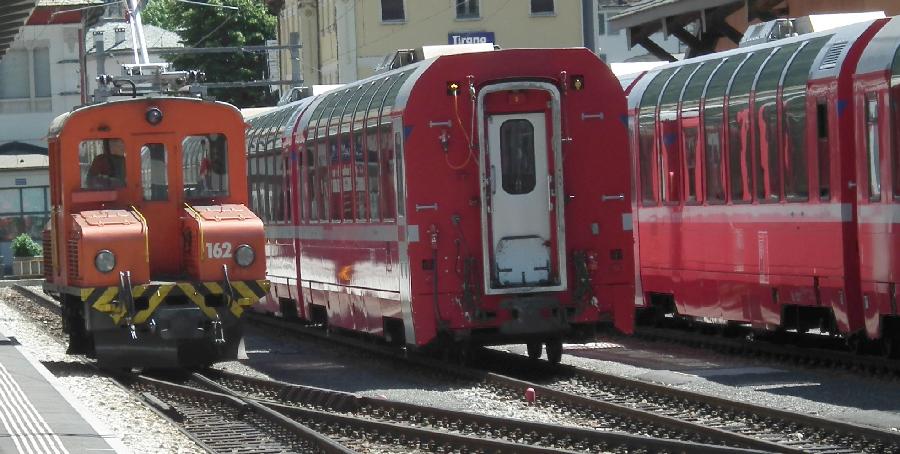
A bunch of prototypes on July, the 18th, 2010 in Tirano, the Rhaetian Railways' southmost station.
At the last millenium's end, in the year 1999, the Rhaetian Railway ordered ten of these coaches at Stadler of Altenrhein, for use on the Bernina line. At that time, the vehicles' big windows which were integrated into the roof partially, were somewhat of a revolutional design and a reminiscence to the increasing touristy requirements. A new cost-effective construction pronciple was found using aluminum profiles for the body frame.
Since these cars stood the test of time in operations for some years, 16 further units of this type were ordered and set into operation in 2006 and 2007. Technical data of these cars can be found at Stadler and some global informationen on the related rollig stock at the Rhaetian Railway.
The models by Kiss
can basically be called a well done construction which has quite some potential for improving several details. Modeling enthusiasts have numerous possibilities to modify the cars' front faces in terms of detail colouring according to the prototypes and will be happy to exchange the axles with ball bearing axles, f.i. by Magnus.
Really felicitous is the coaches interior design. A magnificent idea was to print the prototypes' carpet patterns onto the models' floor. Exactly fitting windows and a quite exact lettering are positive aspects as well. Also the three-point-suspension of the body shell and the bogies' design make a reasonable impression.
A bit disappointing were little paint chip-offs at the gray doors' bottom ends and some damaged details on the bogies - probably deserved during transport. Nothing impossible to correct - but nevertheless annoying. Something one needs getting used to is the unvarnished body shell which appears translucent when exposed to sunlight.
A direct comparison with products of other manufacturers sure were like comparing apples to oranges. Of course it weren't much of a difficulty to point out shortcomings and strenghts of each manufacturers' products. But... VW is not Aston Martin and HP is not DEC - each manufacturer has a different approach hence the products are simply different.
Would I buy these cars again ? Yes, I would.
The corrections...
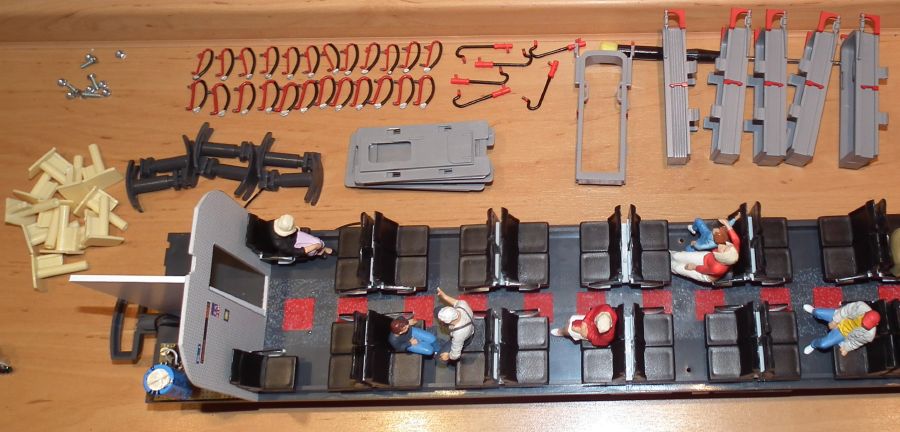
Redesign in terms of colour - air-brake hoses, electric cables and gaiter mountings. The cars had to be disassembled for this.
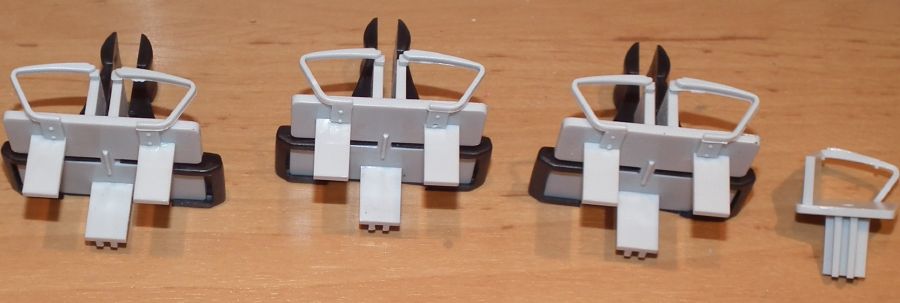
The armrests had to be deburred first before applying the correct paint.
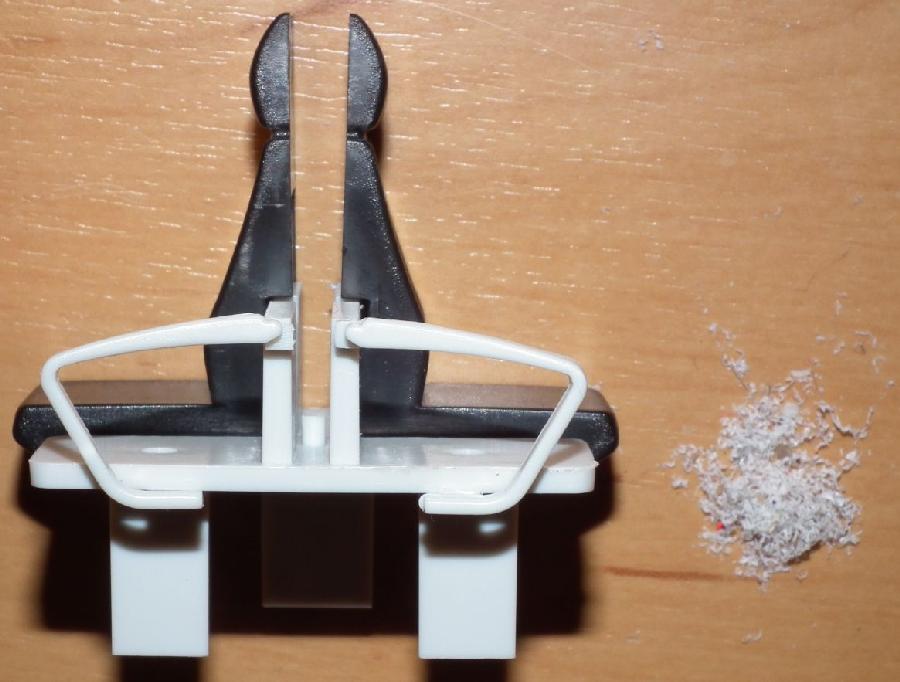
Corrected armrests and the remainders of deburring a row of seats.
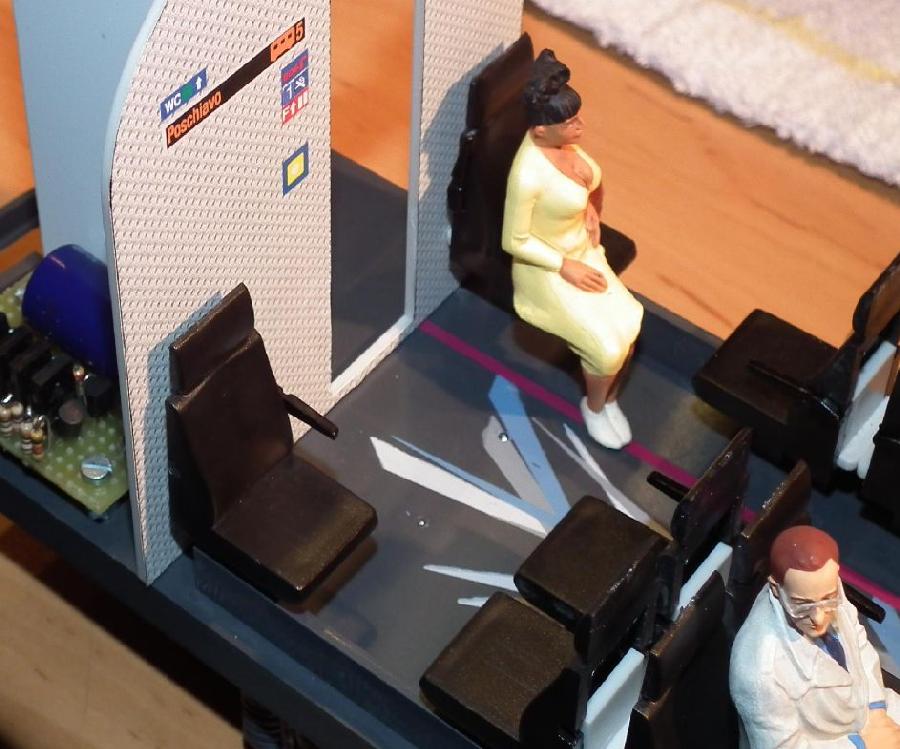
Corrected 1st class lettering, a new illu circuitry inside the WC and a modified armrest - for Madame Preiser to take a seat.

1st class coach after populating it...
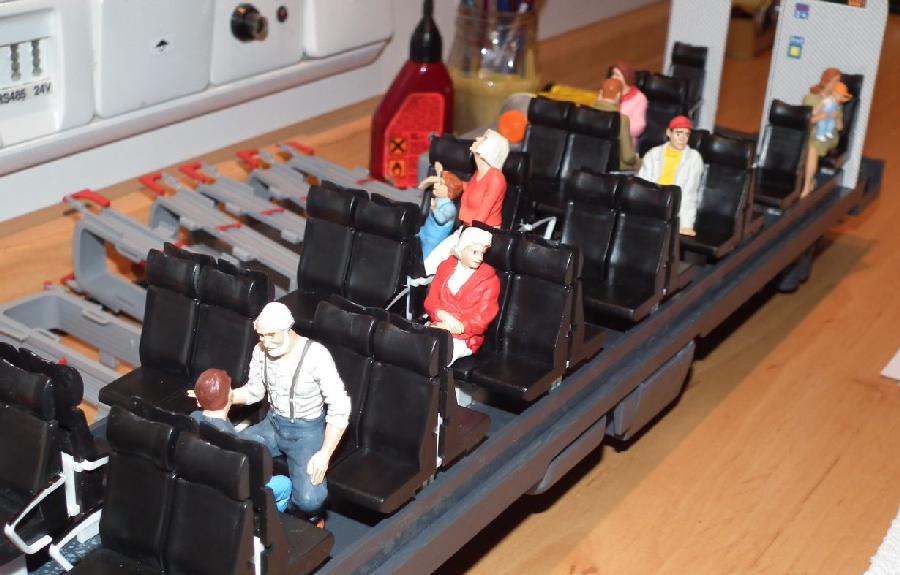
... and the same on the 2nd class.
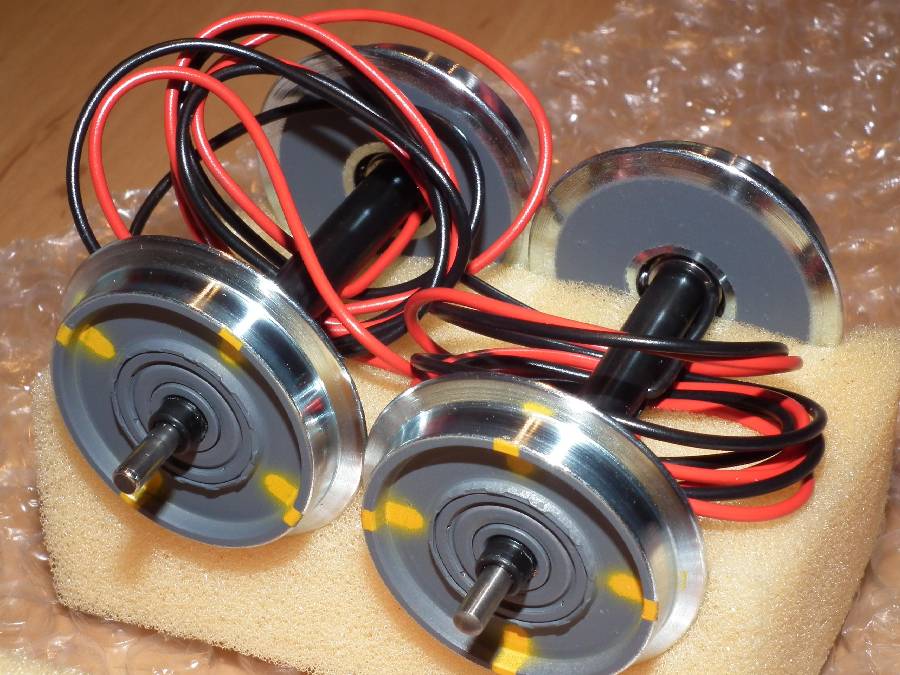
The interesting but not really convincing ex-factory variant of axles was replaced with a proven solution by Magnus.
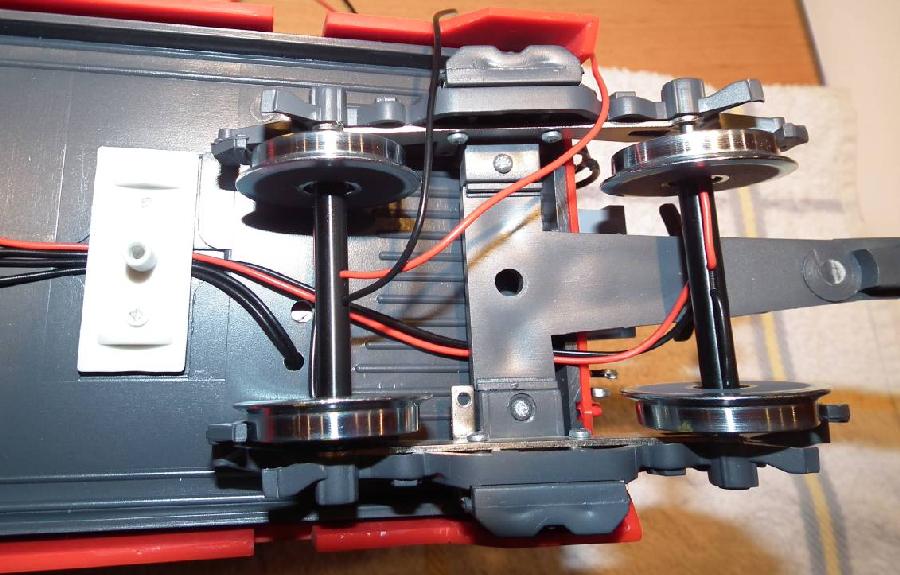
An indeed convincing solution by Kiss is the cable routing on the coaches' bottom side.
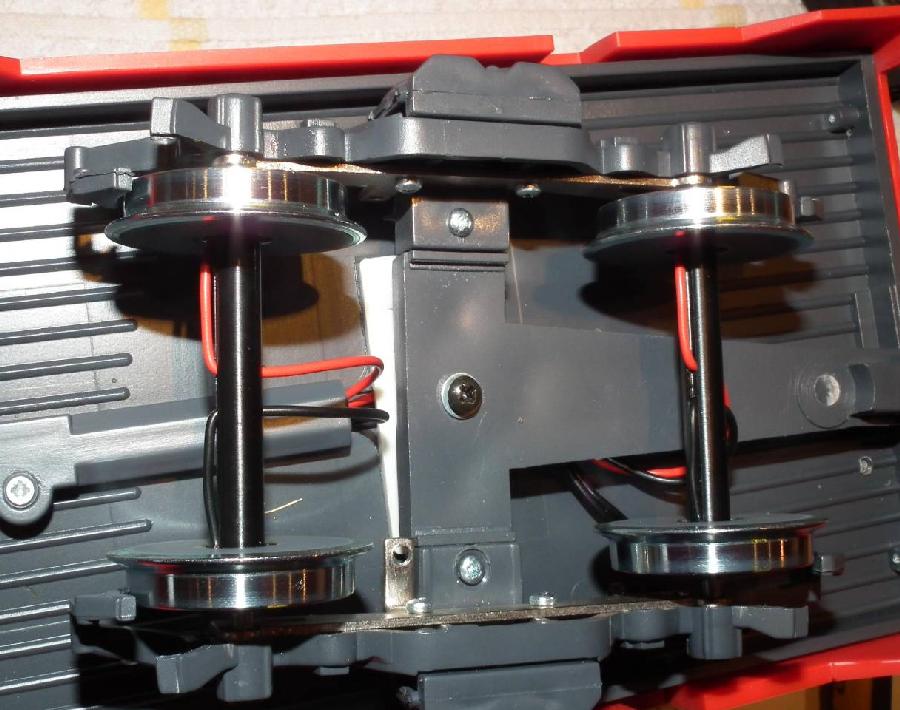
The cables vanish in the antrum beneath the bogie pin.
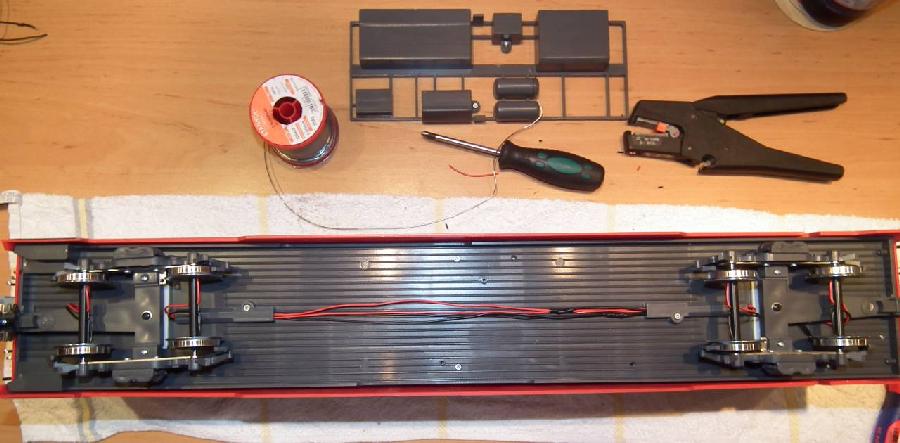
The whole wiring is hidden under the bottom side's details - after remounting the latter.
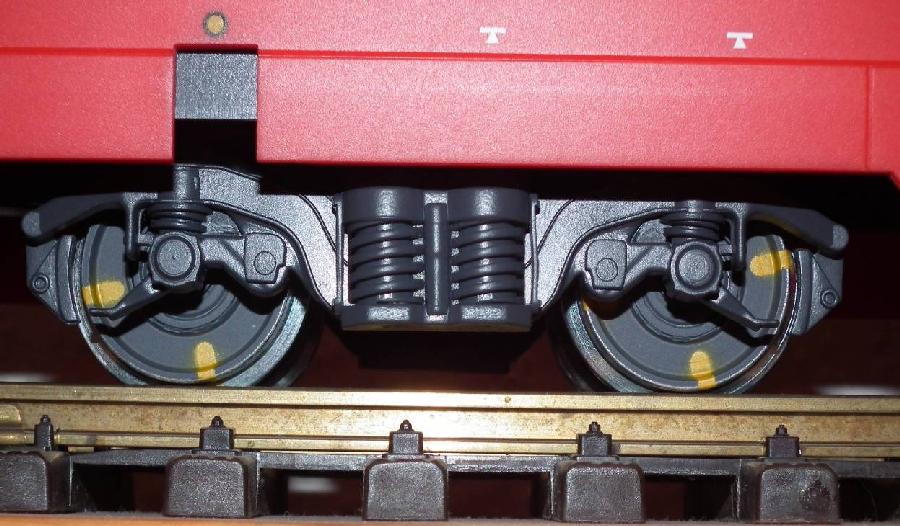
Magnus axles mounted on the Kiss bogie - a perfect symbiosis.

The ex-factory illumination is not really made for use on analogue layouts. A new circuitry enables use in both analogue and digital environments.
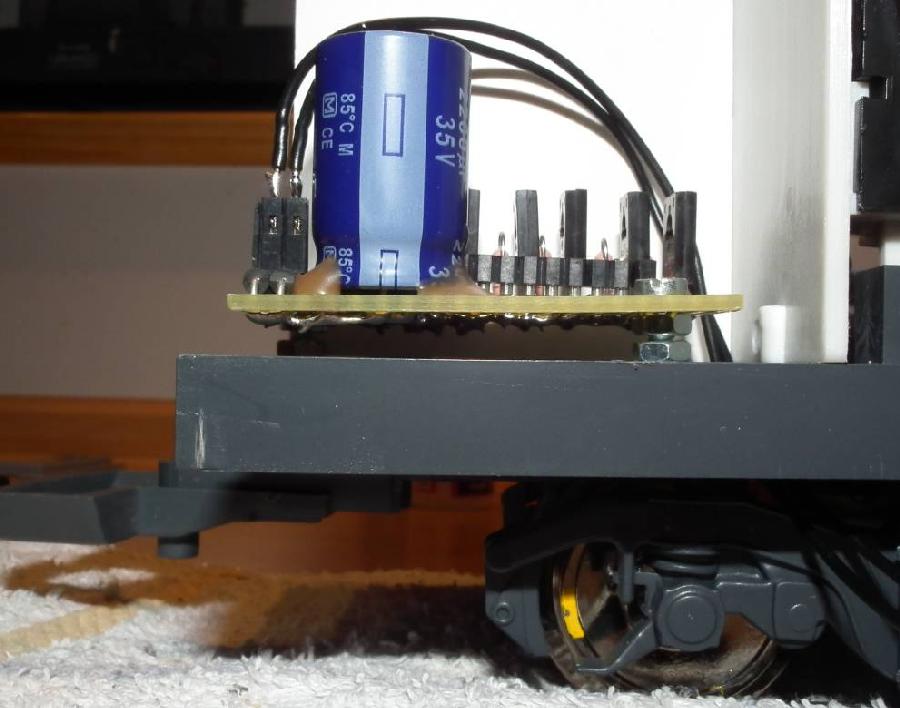
The board was fastened on the chassis using M3 screws. Corresponding threads were cut in the chassis before, nuts provide for a suitable spacing.

A ribbon cable replaces parts of the ex-factory wiring for the roof.
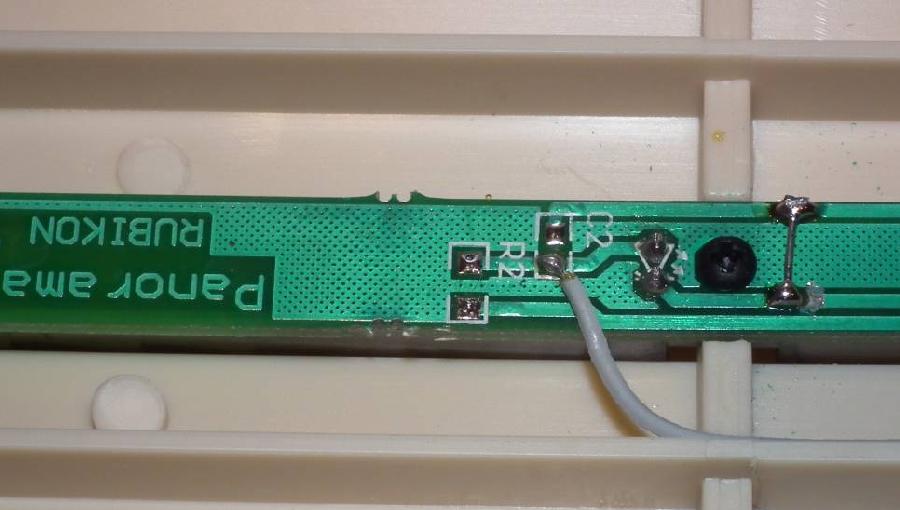
The board inside the roof was redesigned to match the new circuitry's needs. Rectifiers, resistors and capacitors were removed and the lines were modified.
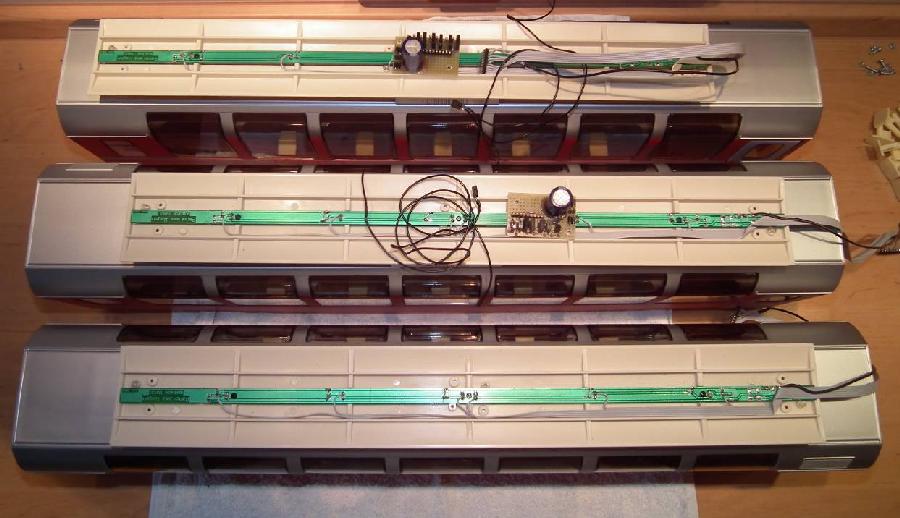
As I was at it... the old batch production story...
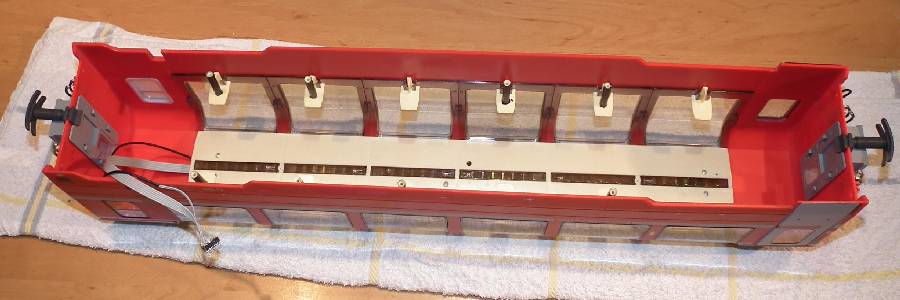
Prior to reseating the body shell, it's worth thinking about the Preiser family's positions... some table legs were ablated.
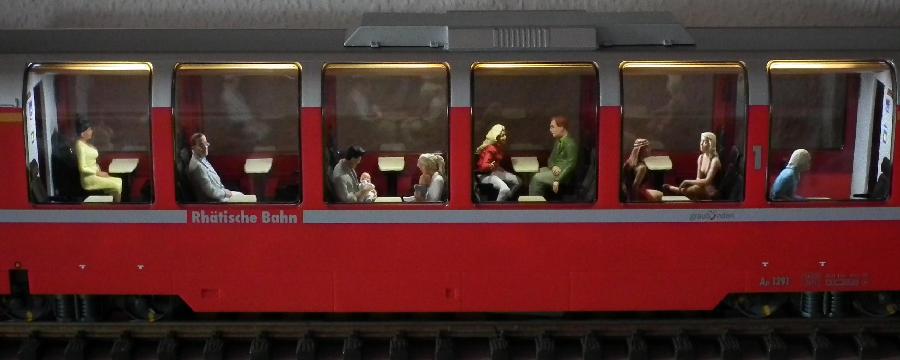
Coaches with redesigned illumination - bright at around 4 Volts.
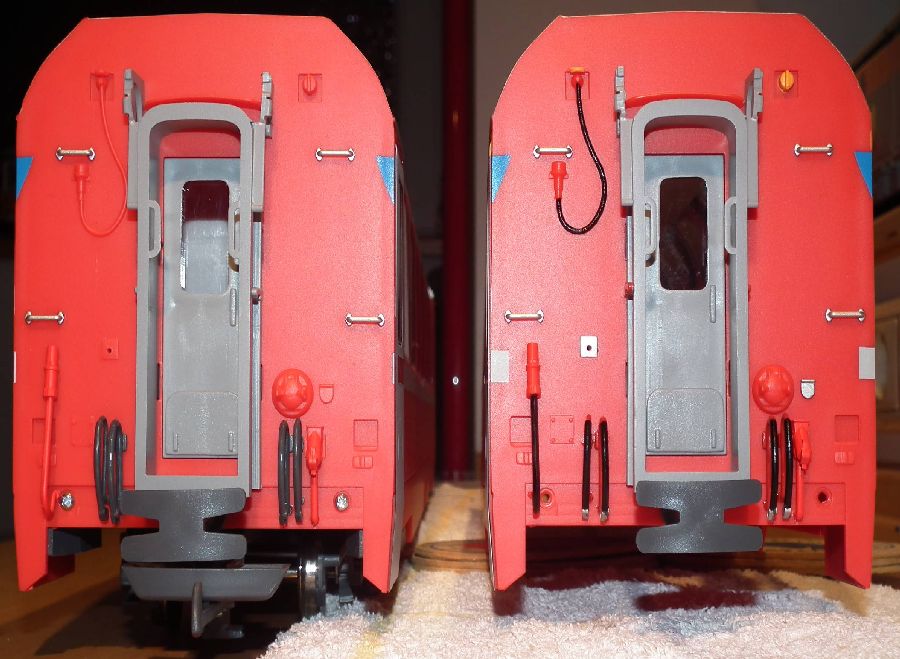
A raw 2nd class coach on the left and a 1st class coach on the right after some first steps of a redesign in terms of colour.
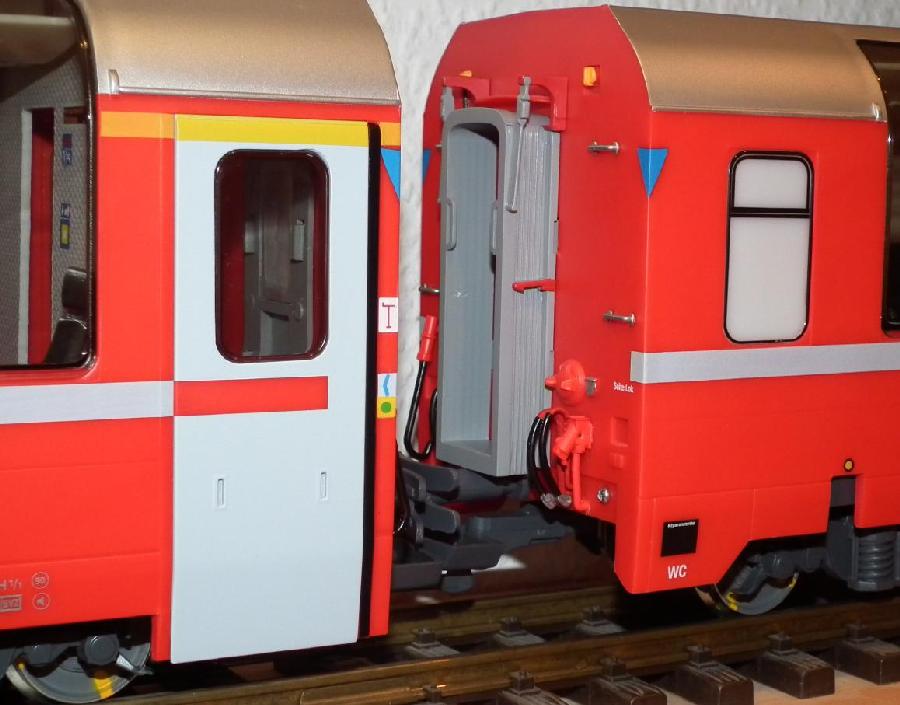
Redesign in terms of colour done on a 2nd class coach's face side
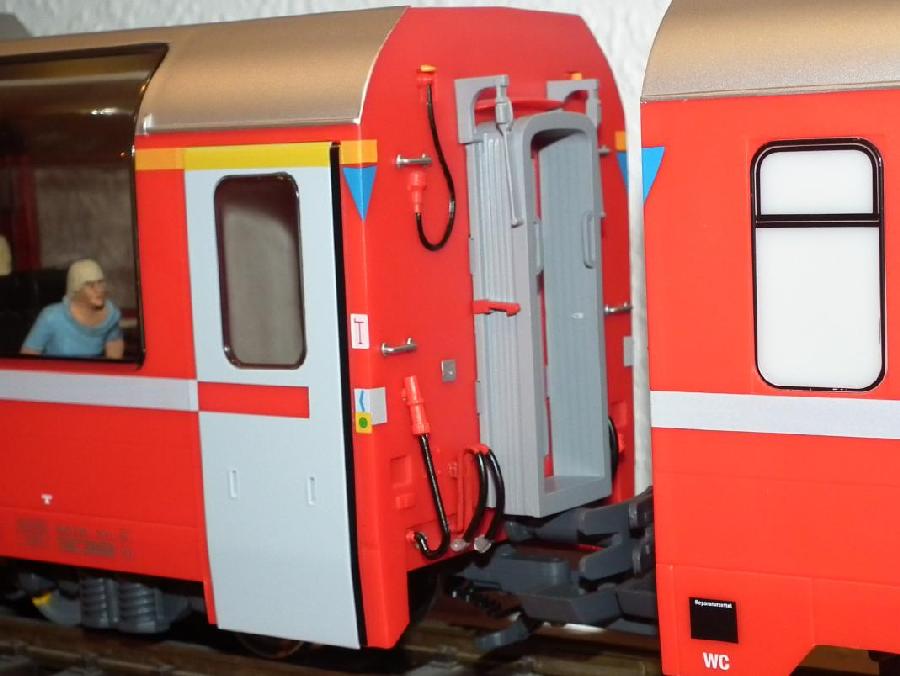
Redesign in terms of colour done on a 1st class coach - not completely done since the gaiter's mounting was forgotten...
Long jumps ? No, thank you ! Reduction of the cars' clearance
A reduction of the gap between the cars can be achieved quite easily by shortening the buffer beams by 6mm and by moving the bottle openers 7mm towards the body shell. This way the gaps between the cars shrink by 1.4cm while the cars still go through R2 curves without problems.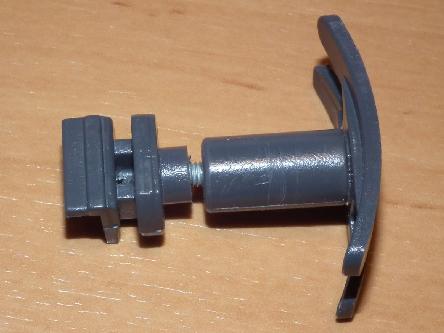
After shortening the beam by 6mm, the two parts are rejoined with a M3 screw
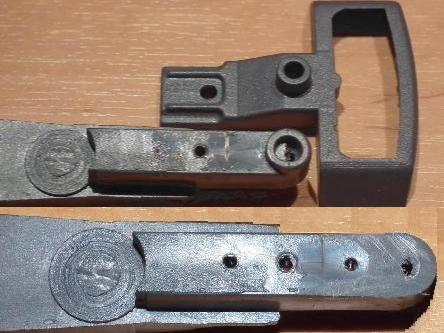
Two additional holes in the drawbar, 7mm closer to the body shell
A M3 screw provides for a strong connection between the two buffer parts which aroused from shortening the beam. This connection can be enforced by adding a drop of adhesive before tightening it. In order to move the bottle opener towards the body shell by 7mm, the ring on the drawbar has to be removed and two additional holes need to be drilled to fasten the bottle opener properly.
The completion of the interior
offers a lot of possibilities to indulge in an bacchanal of details. The side walls, the window beams and the tables were customized to match the prototype and further details such as seat number plates were added.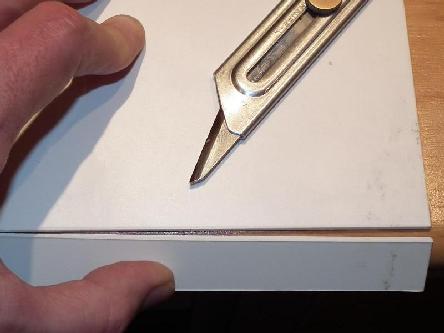
Production of polystyrene stripes for the side walls
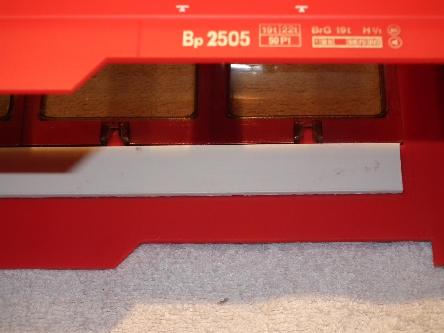
Establishing a plain surface for the panelling with polystyrene stripes
Polystyrene stripes of 2mm were used to establish a plain surface below the windows for implementing a prototypical panelling on the side walls. These stripes replace the little ex-factory support plates and on top of everything they terminate the walls' translucence.
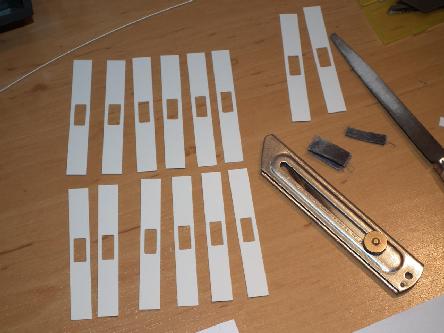
Panel production for the window beams
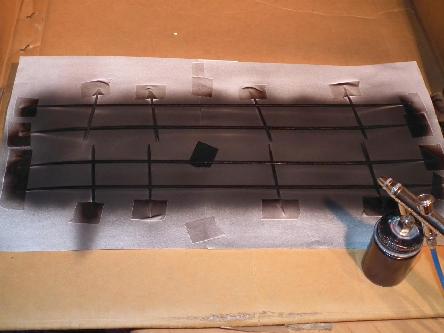
Varnishing 2mm wide PS stripes - borders for the panelling
Exact cuts are required when making the window beam panels to ensure they will fit perfectly when mounting them. A 2mm wide PS stripe painted matte black is used as a terminating border for the panelling below the windows.
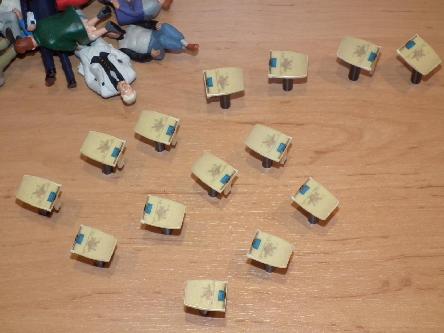
Prototypical decal films are applied to the tables' surfaces
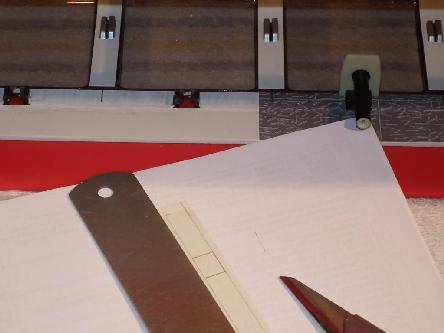
Wall panels with prototypically imprinted film
The decals were varnished with a satin clear paint after they dried. The preparation of the panelling is shown in the picture on the right. Cutting out the gaps for the table clamps is an exercise in patience.
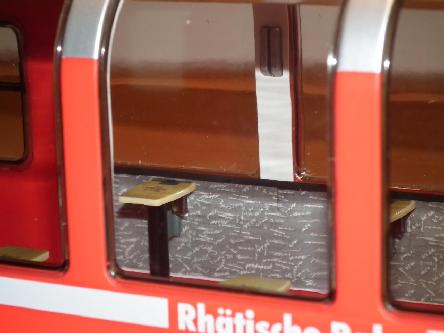
A frist impression of the redesigned interior
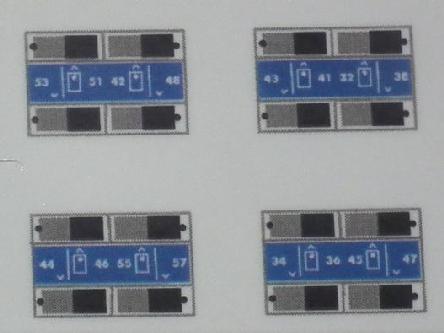
Seat number plates round off the appearance
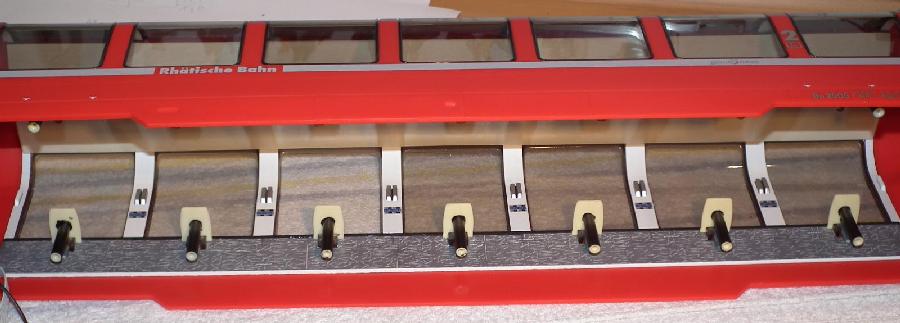
Panelling the walls and window beams, seat number plates and lamp dummies painted in silver and further details add to a more prototypical appearance.
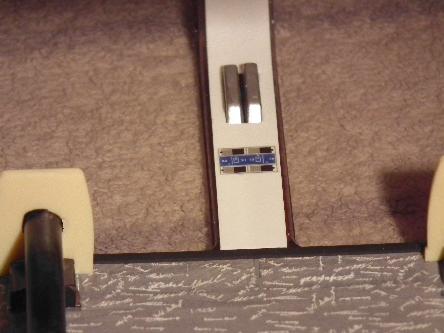
A more precise view of some details...
About exaggerations...
The reproduction of the LED matrix display may be an exaggeration or it may be not - I simply couldn't stand not to do it. Just six polystyrene stripes of 0.5mm, a SMD LED and a decal film for the lettering as well as some glue and black paint were necessary for it:
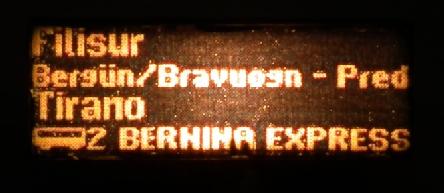
The picture doesn't reflect the colour precisely, the matrix is dark yellow
The reproduction of the LED matrix display may be an exaggeration or it may be not - I simply couldn't stand not to do it. Just six polystyrene stripes of 0.5mm, a SMD LED and a decal film for the lettering as well as some glue and black paint were necessary for it:

The picture doesn't reflect the colour precisely, the matrix is dark yellow
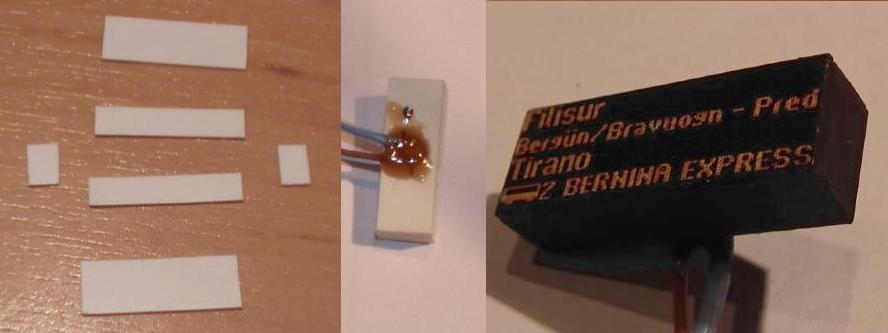
For the display's replication one only needs six little polysytrene stripes, one LED, a piece of decal film, glue and some paint - and patience.
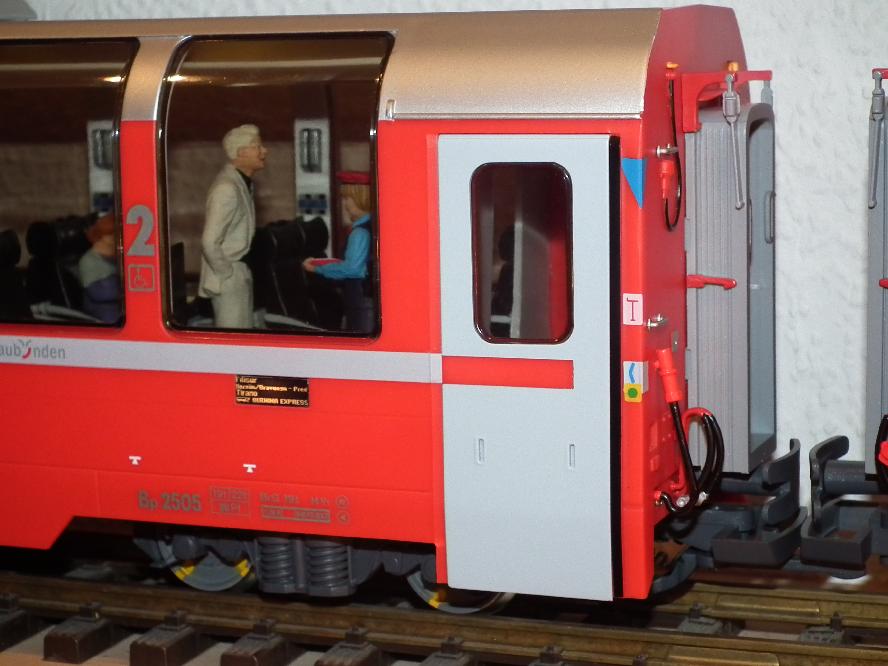
View of the entrance after mounting the display - since it is just 5mm thick, the little light box vanishes in the wall and its interior panelling.
Climate research
Since I simply couldn't find pictures of the prototype without pipes and cables of the air conditioner on the roof, both the pipes and cables were made: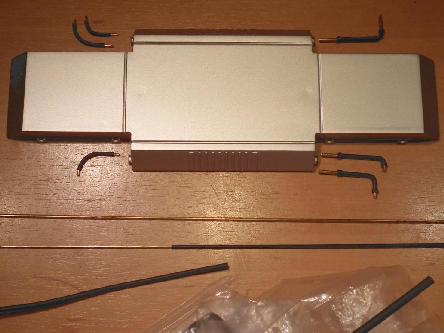
Pipes and cables were made from 1.0mm and 1.5mm brass rods ...
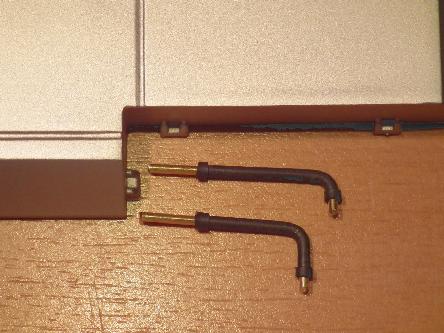
... and heat shrink tubing. The ends were fastened inside the covering.

The brass wires first were cut to length and bent. Afterwards they were mantled with 1.6mm heat shrink tubing.
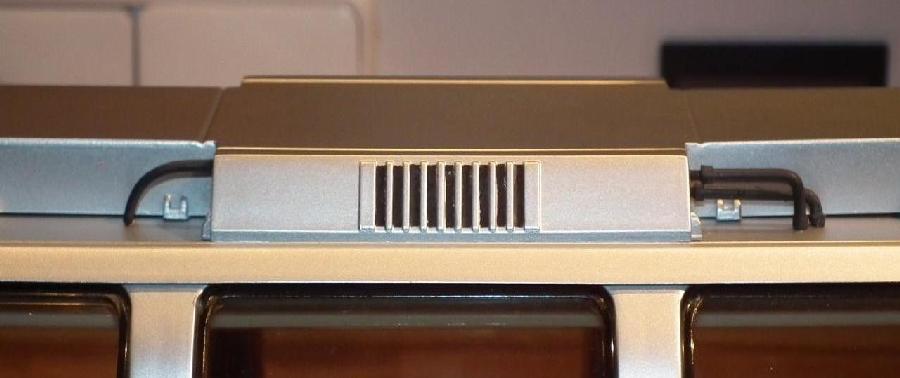
Ventilation gratings made from decals printed in black
A closer look at the results...
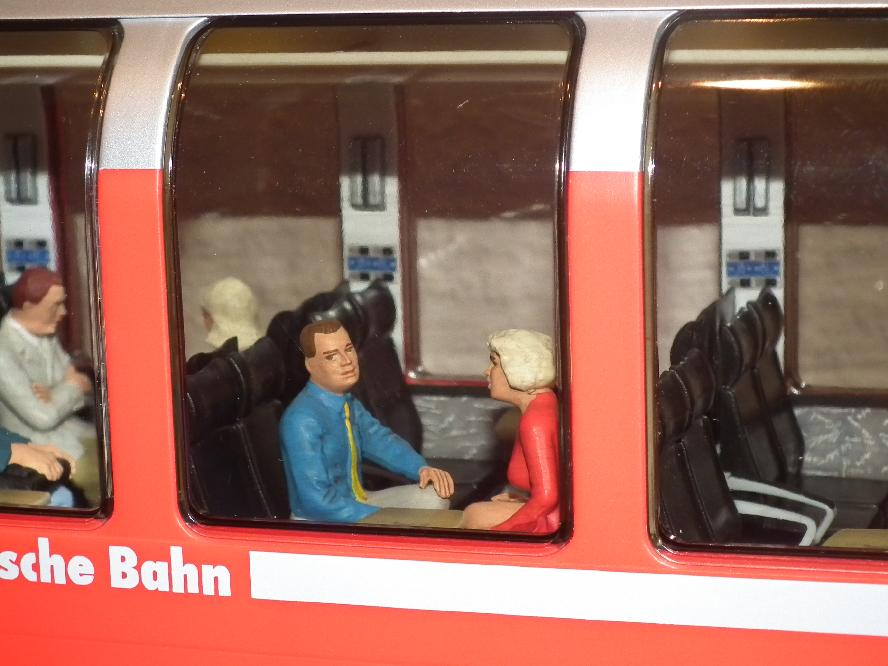
Modified arm rests, wall and window beam panelling, seat number plates, lamp dummies and further details...
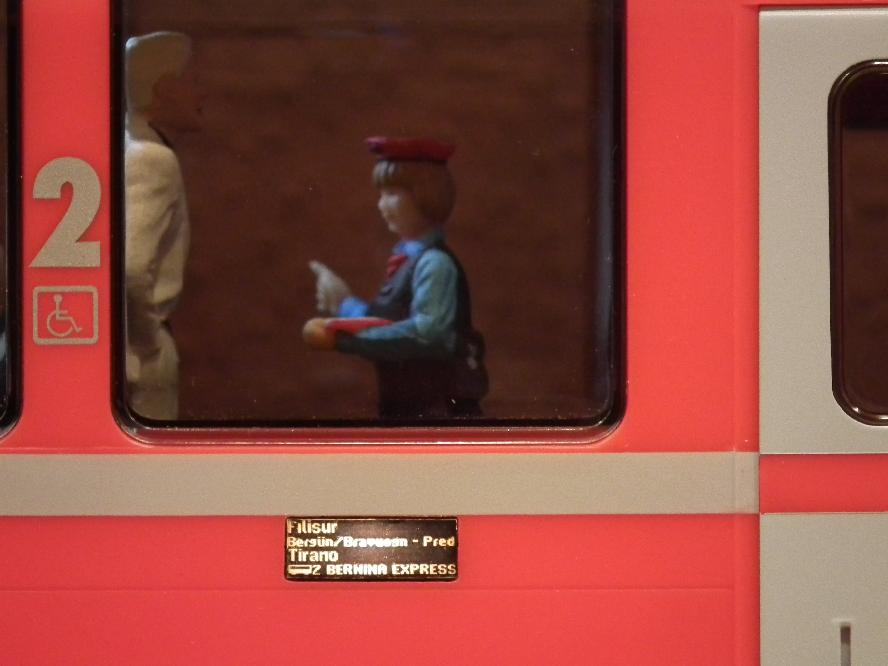
It looks like the conductor explains that this train goes to Tirano...
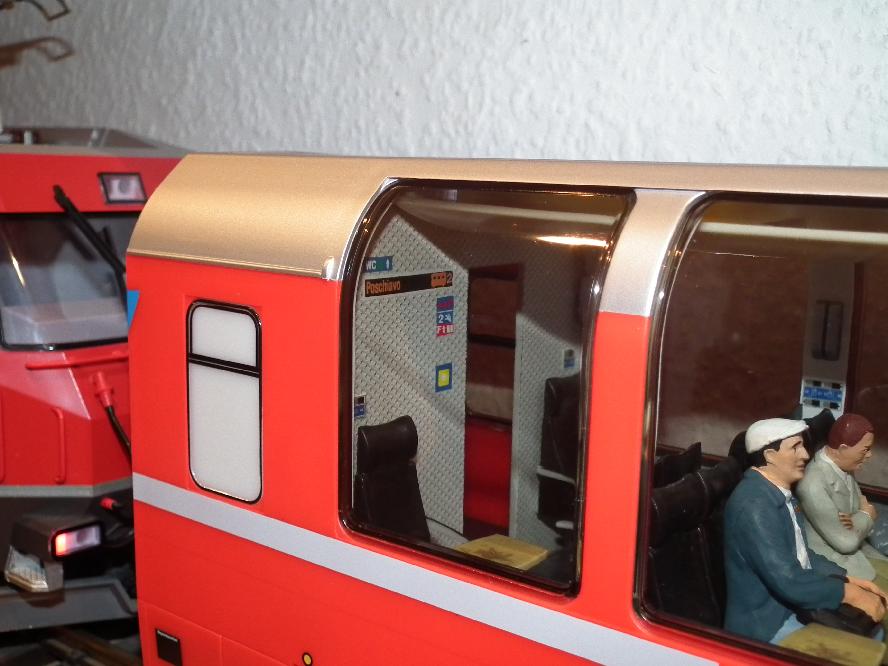
Once one is at it... the coach number on the interior display was adapted and reservation plates for the single seats were added.
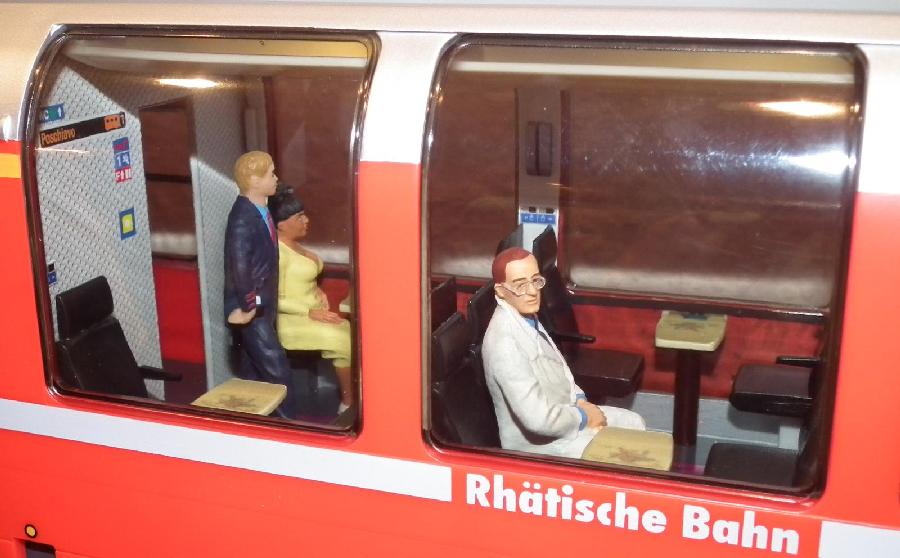
And the same on the first class coach...

The 1st class coach after finishing the upgrade. As mentioned introductory, there is a lot of potential in these models from Kiss for refinements...
Many thanks to Andreas Cadosch for providing the panelling and table patterns and to Gion Caprez for providing prototype pictures of the air conditioner fittings.
can be obtained for personal usage by sending a related request.

